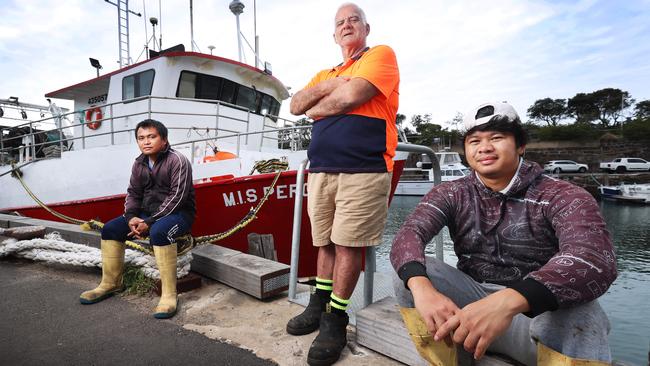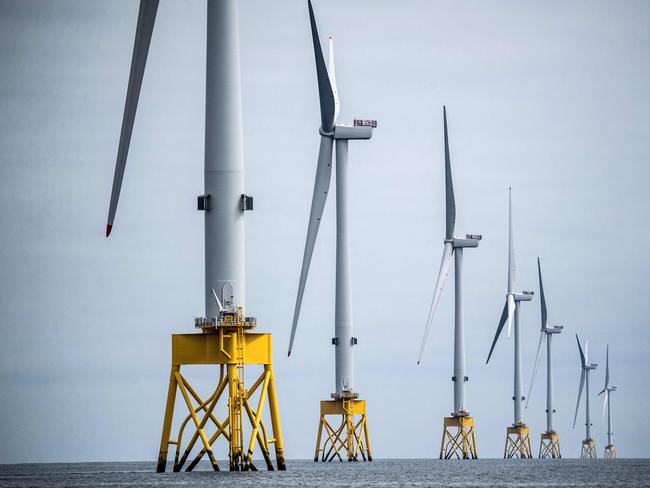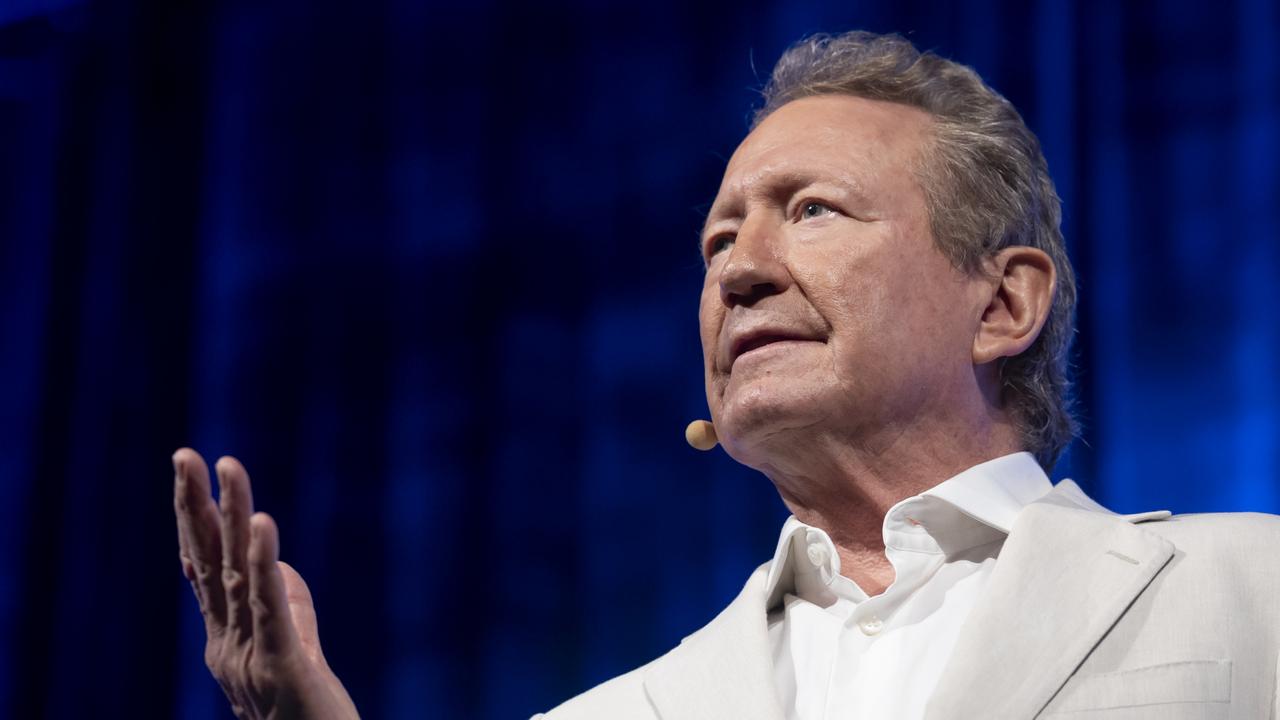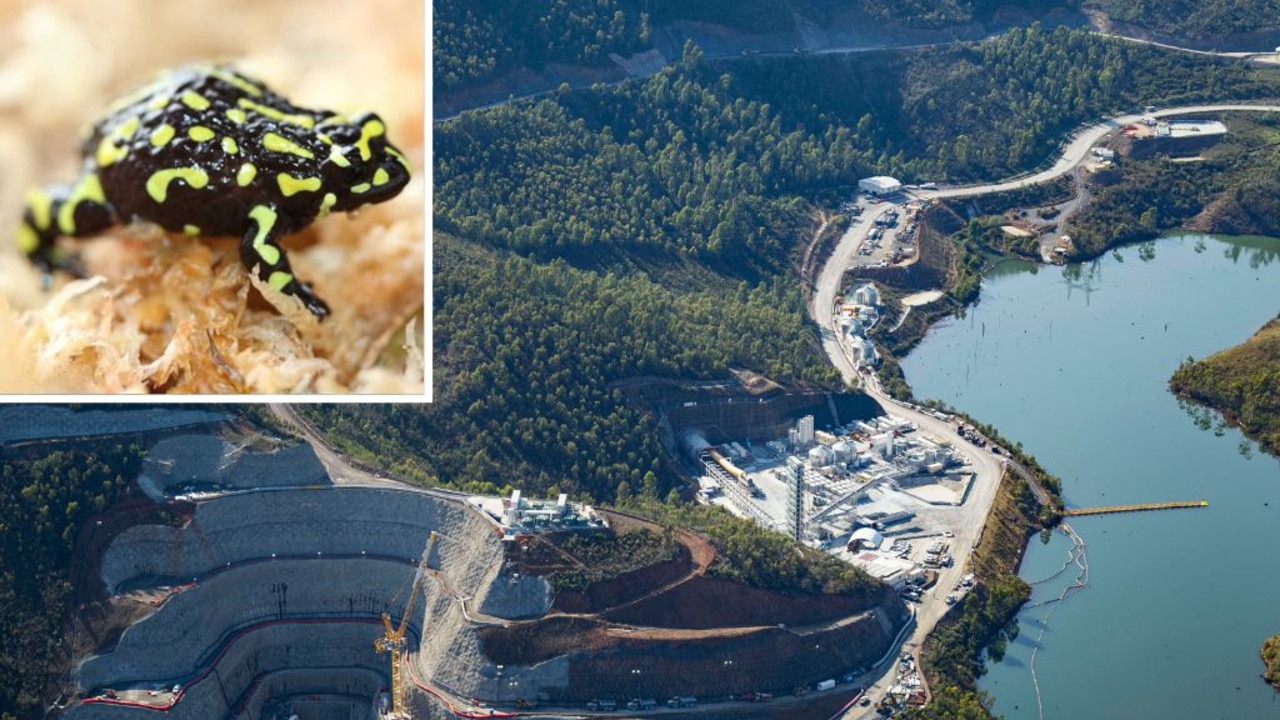Offshore wind to ‘kill fisheries, increase flake, flathead prices’: fishermen
Trawl and shark fisheries are demanding some of their best fishing grounds be removed from offshore wind zones to avoid ‘diabolical’ catch impacts and price hikes for popular fish.

Trawl and shark fisheries are demanding some of their best fishing grounds be removed from offshore wind zones to avoid “diabolical” catch impacts and price hikes for popular fish.
The southeast trawl and southern shark fisheries accuse the Albanese government of ignoring data-backed submissions in designing the Gippsland (Victoria) and Illawarra (NSW) offshore wind zones.
They are demanding the government repeal parts of the Gippsland zone that lie east of Wilsons Promontory, and scrap the entire Illawarra zone.
“If they choose to develop the wrong sites, it’s going to be diabolical for the commonwealth (licensed) fishing industry,” said Simon Boag, executive officer of the South East Trawl Fishing Industry Association and Southern Shark Fishery Alliance.
“I’m not sure how we’re going to make any money or pay our levies. We just can’t have offshore wind farms (OWFs) in the east of the Gippsland zone – there’s too much fishing going on there.
“And the Illawarra is a no-go. Two-thirds of the catch of the royal red prawn fishery occurs within the Illawarra wind zone. There just can’t be an Illawarra wind zone.”
Frank Musumeci, of Wollongong-based Better Choice Fisheries, said his business and its 70 staff and contractors would be “destroyed” by development of the Illawarra wind zone.
“If the wind farms go ahead my business will not exist, and all the people that live off that business will no longer have jobs,” he said.
“We pioneered this fishery 50 years ago. It is our prime fishing ground where they’re touting to put the wind farms.”
Mr Boag said the fisheries gave the federal government detailed heat maps showing historical catch, to avoid key fishing grounds being included in the zones.
This evidence – sourced from the government fisheries manager – had been ignored, Mr Boag said. “The government just seems to want to place OWFs in areas where they can’t be seen by the community,” he said.
“Lakes Entrance is southeast Australia’s largest fishing port by a long way. It astounds us that against the advice … the Department of Industry has extended the offshore wind zone all the way eastward to Lakes Entrance.”
Mr Boag said the exclusion of fishing in sections of the zones could reduce the catch by 20 per cent, driving up the cost of some of the nation’s favourite fish, including staples flake and flathead.
“The price of fish will go up,” he said. “That includes flake and chips, a Friday night southeast Australian staple, which is still relatively cheap for a family.”
Australia could develop an offshore wind industry without overly impacting fisheries through more thoughtful zone design, he said.
Instead, the government appeared to have given the wind industry as much area as possible for exploration, creating sovereign risk for multimillion-dollar fisheries.
“Both fisheries hold commonwealth permits, and are paying in the order of $5.5m to $6m in cost-recovered levies a year to the Australian government,” Mr Boag said.
“We’ve been there for 100 years. We’re buying and selling rights within the industry in good faith. But the government has invented a whole bunch of other permits (for OWFs) which mean we will be excluded.”
Twelve feasibility licences had been granted over the 15,000sqkm Gippsland zone, permitting developers to draw up detailed proposals for approval. “We’re talking potentially thousands of square kilometres of fishing grounds (off limits),” Mr Boag said.
Energy Minister Chris Bowen suggested fishing could continue within OWF zones. “All offshore wind zones are specifically designed to be mixed use,” his spokeswoman said.
“We encourage all parties to continue working constructively through these early planning stages to ensure this is realised.”
However, Mr Boag said fishing with large nets from large boats could not safely or practically be done around turbines with accompanying infrastructure and cabling.
“Chris Bowen says fishing and OWFs will coexist, but that’s non-factual,” he said. “We are mutually exclusive and even though we have a commonwealth permit we will be excluded.
“There is no evidence in the world of trawl fishing or large-scale gill netting occurring within offshore wind zones. (There is too much) risk of collision of vessels, collision of gear.”
Mr Boag said government changes to the Beagle Marine Park, in the middle of the Gippsland wind zone, would already significantly impact the shark fishery. “It is an absolute double whammy,” he said.
The treatment of the fisheries in the rush for offshore wind raised far broader sovereign risk concerns. “Why would you invest in anything if the right can just be issued to someone else in a different form that excludes you?” Mr Boag said.
Wind developers appeared to be pushing compensation to exclude fishermen, but there was no detail. The fisheries wanted to “keep fishing” but believed they would be forced to accept compensation.

Coalition fisheries spokesman Jonno Duniam said a Dutton government would scrap the Illawarra zone, and called for changes to the Gippsland zone.
“Labor has completely stuffed up community consultation – that includes with the fisheries industry,” Senator Duniam said. “It must ensure that the Gippsland proposal does not displace fishers.”
Backers of offshore wind said consultation with fishing groups was ongoing and developers must demonstrate they have avoided or mitigated impacts on commercial fishing before receiving a development licence. They also argue fishing and OWFs coexist in the United Kingdom.






To join the conversation, please log in. Don't have an account? Register
Join the conversation, you are commenting as Logout